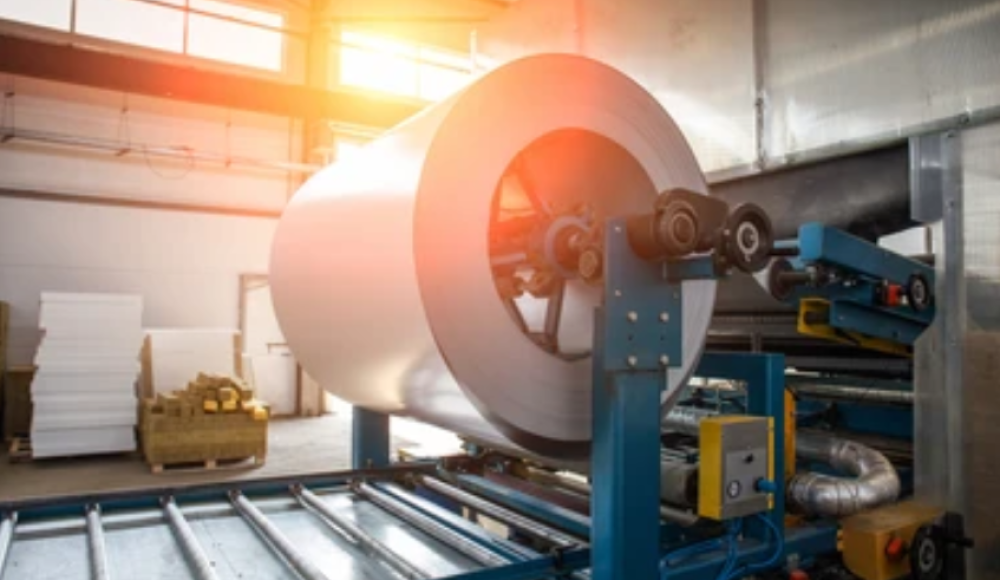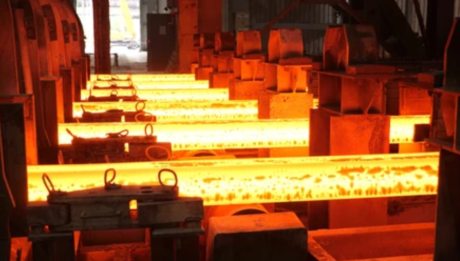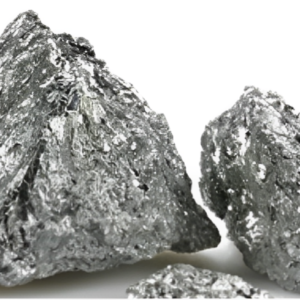Steel has a history of thousands of years. Steelmaking began in the Iron Age and involved the use of bloomery furnaces. Initially, the steel was produced in the Iron Age using a bloomery furnace. After that, the steel industry elevated from the crucible and Bessemer processes to modern methods of Basic Oxygen Furnace (BOF) and Electric Arc Furnace(EAF). Moreover, it has significantly improved the steel quality available in the market today. In this article, we will deal with every aspect of steel and its applications. Besides this, we will learn its types and composition.
How Would You Define Steel?
Steel is an alloy with a mixture of iron and a lesser amount of carbon. They help produce a material that has high strength and flexibility. Here if we increase the amount of carbon and other elements along with iron. It makes different materials that are harder and more flexible as compared to pure iron. This strength and specific properties make steel an essential material for different industries.
What is the Composition of Steel?
Steel results from the composition of iron and carbon. Its carbon content typically ranges from 0.2% to 2.1%. So, it typically helps improve the hardness and strength of the steel. Besides this, these properties can be modified using alloying elements, i.e. chromium, nickel, and manganese. They give various types of steel with distinct characteristics.
Types of Steel
Here are some types of steel:
| Type of Steel | Composition | Properties | Applications |
| Carbon Steel | Iron and carbon | High strength, low cost | Construction, automotive, infrastructure |
| Alloy Steel | Iron, carbon, and alloying elements | Enhanced properties (strength, hardness) | Machinery, tools, automotive parts |
| Stainless Steel | Iron, carbon, and chromium (min. 10.5%) | Corrosion resistance, high durability | Kitchenware, medical instruments, construction |
| Tool Steel | Iron, carbon, and various alloys | High hardness, heat resistance | Cutting tools, molds, dies |
| High-Speed Steel | Iron, carbon, tungsten/molybdenum | Heat resistance retains hardness at high temperatures | Drills, taps, milling cutters |
How is Steel Made? Complete Process
Steelmaking is quite a complex and multi-faceted process. It helps convert raw materials into one of the most unique and durable materials. These materials have many applications in numerous industries. Let’s discuss the steel-making process in detail.
1. Ironmaking
Ironmaking is the first process of making steel. It consists of the extraction of iron from its oxides. It is based on two methods:
I. Blast Furnace
In the blast furnace process iron, coke which is a carbon material, and limestone are charged to a blast furnace. The furnace, for example, can be achieved as high as 1,700˚C or 3,100˚F depending on the product to be processed. Here, the coke also acts as a reducing agent by combining with the iron ore. It reduces by taking away the oxygen atoms to give molten iron. The limestone is essential in minimizing the creation of the unwanted material referred to as slag. Because it tends to act as a reducer for impurities. The product obtained is molten iron or pig iron.
II. Direct Reduction
The direct reduction method reduces iron ore to iron by using forming gas, i.e. natural gas or coal gas at a comparatively lower temperature than the blast furnace method. This gives direct reduced iron (DRI) also known as sponge iron. It is then used in the steelmaking process or else further refined.
2. Steelmaking
The steel production process includes turning the molten iron or DRI into steel. This stage involves two primary processes;
I. Basic Oxygen Furnace (BOF)
In the BOF process, molten iron is discharged timely into the furnace designed with refractory bricks. Here, the blowing air through the liquid iron turns the molten iron into an oxidized form. So, it separates carbon, silicon, phosphorous, and manganese among other impurities. All these impurities are either emitted as gases or slag. The overall result is that of getting high-quality molten steel.
II. Electric Arc Furnace (EAF)
EAF stands for electric arc furnace which is created by graphite electrodes. These electrodes are used to melt scrap steel or direct reduced iron (DRI). This method is useful because it offers control in the determination of the composition of steel. Besides this, it is versatile and widely used in getting high-quality steel from scrap metal.
3. Secondary Steelmaking
The other process is secondary steelmaking, also referred to as refining. Here the steel composition and properties are different in certain characteristics. Its key processes include:
I. Ladle Metallurgy
Here we tale steel using ladle while other alloying components are also present in it. Besides this, we adjust the temperature and proportion of the components in a particular way to consider necessary properties. It also includes a step like desulfurization or deoxidation in the process so it can remove the impurities.
II. Vacuum Degassing
It is used to eliminate dissolved gases, i.e. hydrogen and nitrogen within the molten steel. This process helps improve some mechanical characteristics and the qualitative condition of the material.
4. Casting
Subsequently, the refined molten steel is cooled down in the process of casting. There are two main methods: There are two main methods:
I. Continuous Casting
Here the molten steel appears in a water-cooled mold with an adjoining refractory to start off the forming of steel. The partially frozen steel is continuously pulled out of the molds and cooled to billets, blooms, or slabs depending on processing.
II. Ingot Casting
In ingot casting the steel is poured into molds in the form of an ingot. The ingots are left to cool and freeze before they are ejected out of the molds. This process has limited use as continuous casting. However, this technique is still used in some applications.
5. Forming and Processing
Once solidified, the steel undergoes various forming and processing steps. Includes binding it into rolls by a belt wrapper and coil wrapper belt. So, it can achieve the desired shape and properties. It includes two methods, i.e.
I. Hot Rolling
In this process, an intensive heating of the steel is performed. Besides this, the material is pressed between rollers to acquire the required thinner and desired products. These may include sheets, bars, and rails. They incorporate this process to increase the ductility as well as the workability of the steel.
II. Cold Rolling
Cold rolling is carried out at a temperature less than the room temperature. Then it results in a higher finish and precise dimensions of steel. It is widely applied in thin sheets and strips.
6. Heat Treatment
Heat treatment processes increase the mechanical properties of steel, i.e. hardness, strength, and toughness. It usually comprises the following steps.
I. Annealing
It is the process of heating the steel to the given temperature and then cooling it progressively. It also helps in reducing internal stresses, increasing the ductility of the steel and fine grain structure.
II. Quenching and Tempering
Tempering rapidly cools the steel, mostly in water or oil to increase steel’s hardness. After that, tempering reheats the steel to a lower temperature and cools it gradually. It is used to increase ‘toughness’ and decrease that of ‘brittleness’.
What is Steel Used for?
Steel, known for its versatility, comes in various types and grades. Here are some of its applications:
1. Transportation
Steel plays a crucial role in transportation through its use in infrastructure like bridges and railways. It also constitutes the frames of various vehicles, including trains, cars, and large vessels. Its exceptional strength makes it ideal for these purposes.
2. Construction
In the construction industry, steel is predominantly used as structural and load-bearing elements due to its high strength and stiffness.
3. Manufacturing
Steel is extensively utilized in manufacturing, particularly for machinery parts and tools. Its robustness makes it a preferred choice for demanding applications.
4. Packaging
Steel is commonly employed in the production of cans for food and beverages. Its durability and recyclability make it an excellent option.
5. Medical Equipment
Stainless steel is widely used in medical instruments because of its corrosion resistance. It doesn’t support microbial growth, is easy to clean, and can be sterilized with heat. Surgical tools and various medical devices are often made from stainless steel.
6. Sports Equipment
Steel is found in sports gear such as bicycles and golf clubs. Items that endure significant stress benefit from steel’s strength and durability.
7. Energy Production
In the energy sector, steel is used for its strength and magnetic properties. It’s found in generators, transformers, and motors, as well as in structural components like pylons and steel-reinforced power cables.
Differences Between Steel and Aluminum
| Steel | Aluminum |
| It’s just a mix of iron and carbon | Pure metal (element) |
| It is quite heavier and stronger | Lighter and weaker |
| Steel might need protective coatings to prevent rust | It’s naturally corrosion-resistant |
| It is high construction, automotive | Use in aerospace and packaging |
| Quite less expensive | It is typically more expensive |
What is Harder than Steel?
Although steel is quite popular because of its hardness. But some materials like tungsten carbide and certain ceramics are harder than steel. These materials have found numerous applications in getting exceptional hardness and wear resistance.
Differences Between Steel and Metal
| Steel | Metal |
| An alloy of iron + carbon | Comprised of a broad category including various elements |
| It is strong, durable, hard | It is conductive, malleable, ductile |
| E.g. stainless steel, carbon steel | E.g. copper, aluminum, gold, silver |
Conclusion
In conclusion, what is steel? It’s a fundamental material in modern industry. It is generally known for its strength, versatility, and adaptability. Besides this, its historical development, diverse types, and various applications highlight its importance in various sectors. These may include construction, manufacturing, and everyday life. Moreover, it is generally available in different types and offers different applications.
Frequently Asked Questions
Q1- Can we recycle steel?
Yes, it is true that steel is very recyclable and can go through the recycling process many times without degrading.
Q2- What are some common uses of alloy steel?
Alloy steel is the best where choice high tensile strength is a requirement. These may include gears, shafts, car fenders, and columns.
Q3- How can I prevent steel from rusting?
As with iron, we can prevent it from rusting using painting, the use of stainless steel, and applying anti-corrosive treatment.
Q4- What is the most commonly used type of steel in construction?
These may include carbon steel, generally for beams, columns, and reinforcements.
Contact us for more information.






22 thoughts on “What is Steel? It’s Composition, Types and Applications”